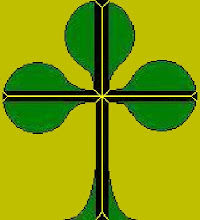Praise Chorus V.S. Hymn FIGHT!
First of all, I find the worship wars of our time to be annoying, silly, and, quite frankly, embarrassing. I believe that hymns and praise choruses to be different in purpose and thus not mutually exclusive in use.
Most hymns were written during eras of theological strife and were written as theological primers. Some are better at it than others, but there is no doubt that the point was to teach. Praise choruses are being written in response to the spiritual stagnation and emotional disconnect that many have found in traditional churches. They are also most popular within low liturgical churches and, for many of these churches, constitutes the full extent of the participation of the laity during the service (except for the tithe of course ;-) ). Thus the purpose of the praise chorus is engagement (which is not the same thing is emotionalism BTW).
Many of the "hymn-only" exponents will of course reply, "But hymns engage too!" Yes, they do, but praise choruses also teach. The difference is a difference in emphasis, and we need to recognize that since both things are necessary within a church service, it is not unwise to utilize both the praise chorus and the hymn.
For instance in Blessed Be Your Name, there is actually a very clear lesson: praise God regardless of circumstances. This is not merely engaging in emotion, but a very clear attempt to teach a very important Christian message. Indeed, I would go so far as to say that the song not only teaches, but trains by giving us something to say in praise in both the good times and the bad.
Structure
Despite its claims and reputation for being informal, the praise chorus has tended to have a very formal structure:
- Verse 1
- Pre-chorus
- Chorus
- Verse 2
- Pre-chorus
- Chorus
- Bridge
- Chorus (repetitions)
There are, of course, many examples of variation of this order (especially the absence of the pre-chorus), but the pieces tend to be the same, and the order tends to be what is above.
What is interesting is that these parts also tend to have rather specific relations to the song's theme. What most people remember most is the chorus (hence the name of the genre) for two reasons: the chorus is often repeated 9,000 times (and is designed for it), and because the chorus tends to be very simple and emotive. Indeed, the chorus tends to be the emotionalreaction to the theme, usually directed towards God. For instance, if you wanted to understand what the theme to Blessed Be Your Name is, you couldn't find it in the chorus. It just doesn't give enough data. Indeed, the chorus is much more an application of the point of the song (praising God regardless of circumstances) rather than an explanation of it.
The verses on the other hand tend to be a didactic or revisionary treatment of the theme. Indeed, the verses tend to be far less emotional, slower, and more articulate. It doesn't always directly explain the theme itself, but it does lay the mental foundation for the overall point. It is here that you are going to find the song's subtleties (if any), qualifications, and theological articulation. For instant, in Blessed Be Your Name, both verses are made up of two parts, one describing the good times and one describing the bad. In each case, the good times and the bad are enveloped with the declaration of "Blessed be Your name", implying that we bless God in both circumstances.
The prechorus is essentially there to transition from the verse to the chorus. Mostly this is because the verses and choruses are dramatically different in purpose and tempo for the majority praise choruses. The prechorus often does this by musical crescendo, and also by some kind of lyrical shift as well. Sometimes it summarizes the theme as we move to reaction; sometimes it contrasts the thoughts in the verses with the coming emotional response; but it also can use any number of other transitional devices. (Blessed Be Your Name uses summary by the way)
Finally, we come to the bridge. The basic point of the bridge, in my opinion, is a secondary thing to repeat in an effort to break up the monotony of repeating the chorus. Therefore the bridge tends to represent one's reaction to the theme. However, unlike the chorus, it doesn't tend to be purely emotional (though still rather emotional), but is instead usually more reflective. It is actually in the bridge that we usually find the resolution to the thoughts of the verses, rather than in the chorus. First instance, in Blessed Be Your Name you have an emotional response but articulated with a biblical verse (Job 1:21) so is therefore clearly focused on the theme.
To understand how these parts all relate to one another, it may be rather helpful to think of the praise chorus as a narrative. Theological musings or observations of life (verses) forces us into a kind of crisis of faith (theme of the song). This crisis brings us to an emotional revelation of God (chorus) that we then praise. Eventually, this leads us to reflection (bridge).
Therefore, back to my original thesis, praise choruses aren't bland, and they aren't pure emotion (though some can be). They are narratives that move us through a belief or idea so that we can integrate it into our lives practically, and that is something very beneficial for the church.

